
Masterpieces from the Natural World








FOREWORD 11
12 VORWORT
WILD AND FREE 17
21 WILD UND FREI
ENDLESS PLAINS 28
28 ENDLOSE SAVANNE
THE WILD NORTH 74
74 DER WILDE NORDEN
EMERALD MAZE 116
116 SMARAGDLABYRINTH
SPIRITS IN THE WIND 148
148 GEISTER IM WIND
INTO THE ABYSS 172
172 IM REICH DER TIEFE
THE FROZEN SOUTH 214
214 DER GEFRORENE SÜDEN
BIOGRAPHY 252
253 BIOGRAFIE
ACKNOWLEDGEMENTS 254
255 DANKSAGUNG
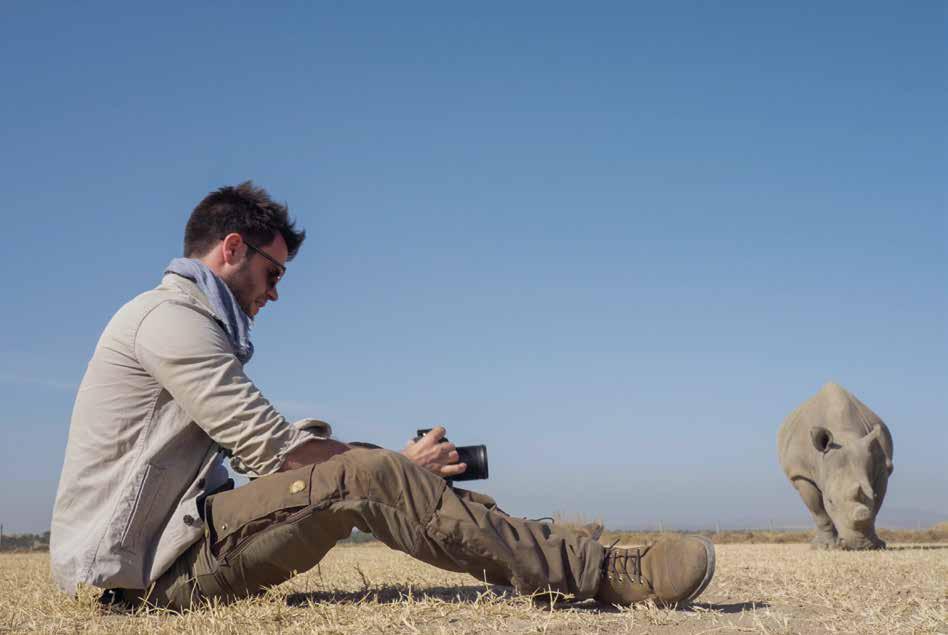
INTRODUCTION BY HARRY SKEGGS
96% of the world’s mammal biomass is made up of humans and our livestock, with just 4% of mammals remaining truly wild – it is a terrifying statistic. That our wild neighbours now represent such a tiny fraction of our world brings into sharp focus just how little of our planet is really free. We simply cannot afford to lose any more.
Wildlife photography has never been more relevant than it is today. On some level almost all of us are photographers, whether we carry the humblest camera phone or the latest flagship mirrorless. Photography uses a universal language, is not restricted by culture or religion and is constrained by no borders, and for these reasons it can speak to us all. That alone makes it fascinating, but it goes further than this. On a deeper level, I am acutely aware that many of the subjects that I am working with may not be there when my daughter grows up. This makes each photo a monument. Imagine a world where T is no longer for tiger.
I studied fine art at Cambridge and, though photography was noticeably absent from the syllabus, I pored over the great nature painters. In the paintings of George Stubbs, I found what I believe to be the germ of fine art wildlife photography. Self-trained and obsessed with the scientific depiction of anatomy, he was one of the first to paint portraits of animals in their own right, and on a scale reserved for portraits of nobles. Prior to this, animals were no more than ornaments to aggrandise their human subjects – Roman emperors on horseback and endless kings with their loyal dogs.
I had never considered a life in photography when I lost myself in the jungles of Brazil, armed with a camera brought almost as an afterthought. What I could not have known was the frustration that would follow, feeling that I had failed on every level to convey the depth of emotion that had gripped me in this incredible place beyond where the lights stop and the wild starts. It soon became clear to me that the skill in
photography was not in the taking, but in the ‘creation’ of a photograph. The same underlying principles apply whether you are an oil painter or photographer.
While the brushstrokes and chisel marks of the Old Masters have left an indelible mark on my artistic journey, photography has an alluring trait that I believe renders it unique –authenticity. Standing in front of a photo you truly see through another’s eyes – not a world corrupted by internal biases and idealisation, but rather a world that truly existed at that moment. It is this truth that makes photography such a powerful agent for change.
I see photography as a bridge that connects the issues that face our world with audiences around the globe. The simple truth is that you cannot ask people to protect animals, or support causes, that they do not know or care about. In order to drive the level of change that our world so desperately needs, you have to win hearts and minds, and that is why I have always strived to make my work more than simply images of wildlife – instead it has to be for wildlife. This has led me to always shoot camera in hand, because I think audiences need to feel that they are sharing my experience in order to connect with it – to share that moment you feel a gorilla’s breath warm across your face, or feel the ground tremble as a 1,000lb grizzly paces gently past you.
My work is intended to be more than art for art’s sake. There is a purpose, method and vision behind it and conservationist ethics and animal welfare are its lifeblood. All my images are of wild animals in their natural habitat displaying their natural behaviour – the intention is to provide a window into the wild, into a scene that would have happened whether or not my camera had been there to capture it. It is for this reason that my images show wildlife as it is supposed to be: wild and free.*
Sadly, our world now faces an extinction event, and I have witnessed the chaos and destruction first-hand. I have been
*There are only two exceptions – ‘Courage to Continue’ (page 249) was shot during the pandemic with a domesticated dog, with all proceeds going to charity, and the images of the northern white rhinos Najin and Fatu, a species that sadly can only be found on a protected reserve in Kenya.
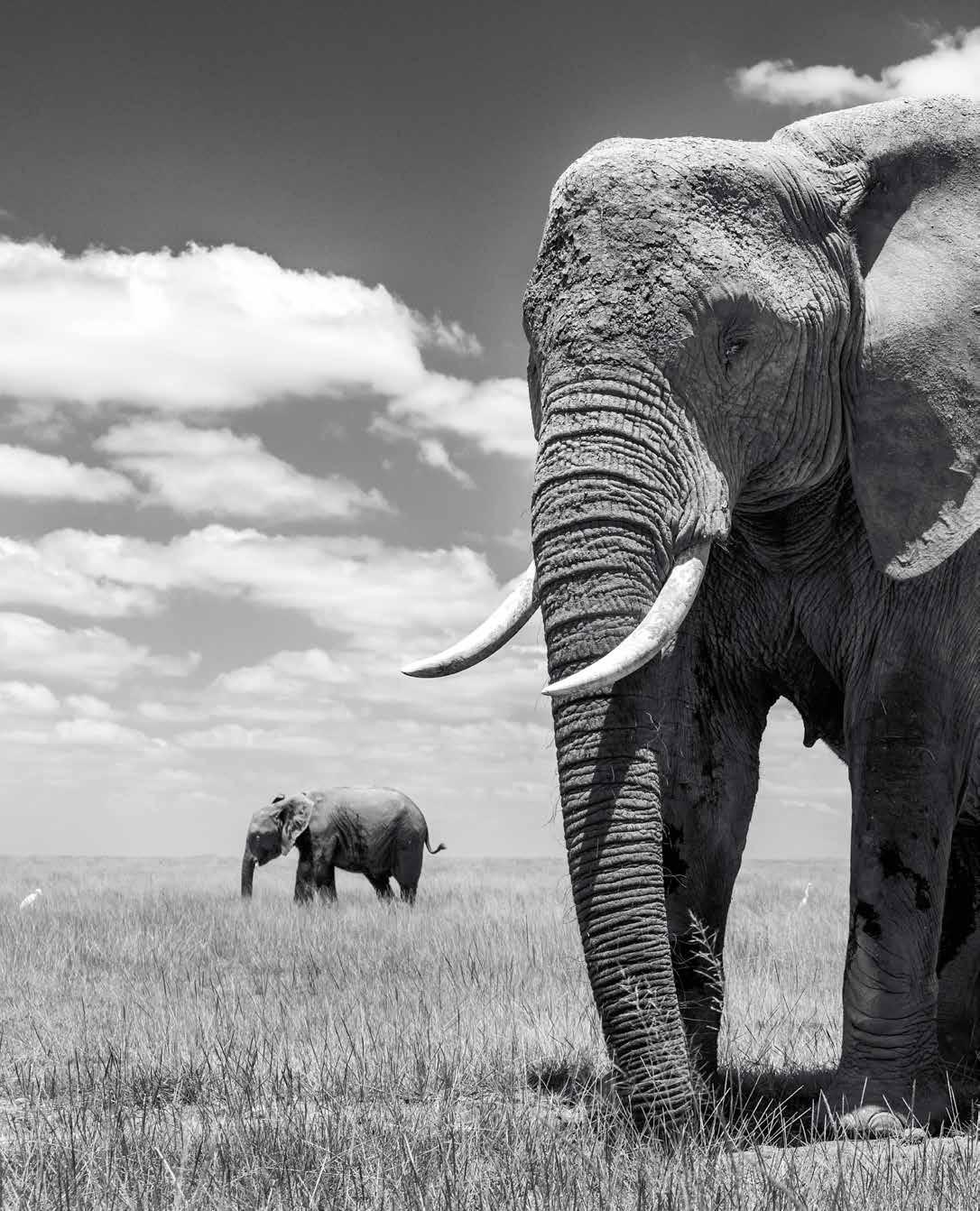
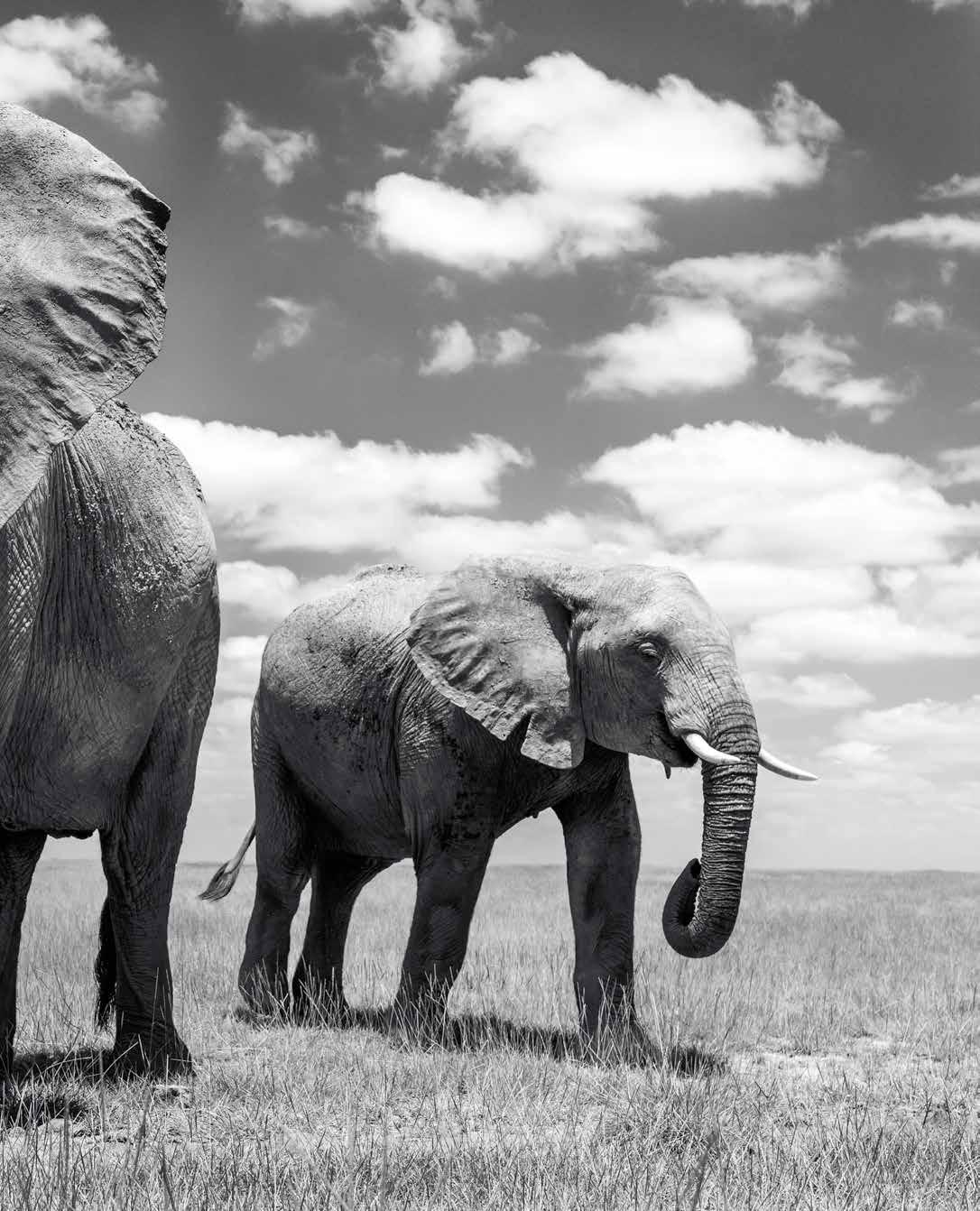

‘Creation’ sets the benchmark for showcasing our planet like never before. The world, as shown by Harry, is beyond beautiful … and worth protecting with every fibre of our beings.
BEAR GRYLLS

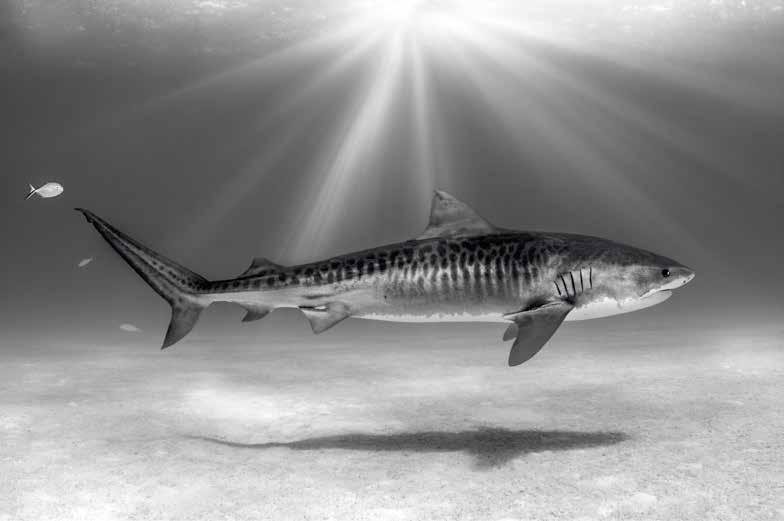
Die Seele der Fotografie verbirgt sich bereits in ihrem Namen. Zusammengesetzt aus den griechischen Wörtern photos und graphos , bedeutet Fotografie wörtlich „Malen mit Licht“. Genau so sehe ich meine Arbeit.
Licht ist der Herzschlag der Fotografie. Das, was ihr Atmosphäre, Emotion und Bedeutung verleiht und das Banale vom Besonderen unterscheidet. Das faszinierendste Motiv kann im falschen Licht langweilig wirken und die unscheinbarsten Protagonisten können zu Helden werden, wenn das Licht stimmt.
Deshalb behalte ich draußen immer den Himmel im Auge, um das perfekte Licht abzupassen. Erst wenn die „Beleuchtung“ steht, mache ich mir um das „Objekt“ Gedanken. Paradoxerweise sind in der Wildlife-Fotografie die Tiere das unwichtigste Element – sie sind lediglich das letzte Puzzlestückchen.
Wenn etwas ihre Neugier geweckt hat, schwimmen Tigerhaie oft in Schlängellinien in Form einer Acht, um einen klaren Rundumblick zu bekommen. Ihre Bewegungsmuster wiederholen sich, sodass man sich bis zu einem bestimmten Grad ausrechnen kann, wo sie wann auftauchen werden.
Silberne Lichtstreifen strahlten auf betörende Weise genau dort ins seichte Wasser aus, wo der Hai (,,Dawn Patrol‘‘, links) seine Runden drehte. Indem ich zuerst das Licht bestimmt hatte, konnte ich mich nun genau am richtigen Platz positionieren, um einzufangen, wie das neugierige Jungtier seelenruhig durchs Bild schwamm, während die glitzernden Strahlen der Szene Leben einhauchten. Denkt man sich in dem Bild aber die Sonnenstrahlen weg, bleibt nur ein ganz banales, sachliches Foto übrig. Das Licht macht die Magie aus.
Für „Limelight“ (Seite 71) befand ich mich in der Wildnis der Maasai Mara in Kenia, um das lautlose Aussterben der dortigen Giraffenpopulation mit der Kamera festzuhalten. Ich wollte auf das Schicksal dieser geheimnisvollen Tiere aufmerksam machen, die unter den Augen des Luxustourismus in alarmierendem Tempo von der Erde verschwinden.
Zu Anfang lief es nicht besonders gut, doch dann wurde, wie so oft, meine Geduld belohnt. Der graue Himmel öffnete sich und ein einzelner weißer Lichtstrahl erhellte die Savanne. Nun mussten wir nur noch mit vereinten Kräften eine Giraffe für diese eindrucksvolle Szenerie finden.
Wir schlichen uns an dieses große Männchen heran, das gerade an einer Akazie knabberte, aber die Bildkomposition war viel zu unruhig. Dann, nur für einen kurzen Augenblick, drehte die Giraffe sich um und ließ ihren Blick über die Savanne schweifen. Es handelte sich höchstens um eine Sekunde, aber da ich die Szene schon vorab für mich festgelegt hatte, war ich gewappnet. Entstanden ist ein Bild, das die reale und die metaphorische Ebene perfekt vereint.
Ich frage mich oft, was die Fotografie von anderen Kunstformen unterscheidet. Man kann Licht malen, aber Fotografie besitzt eine ganz besondere Authentizität – man weiß, dass man beim Betrachten eines Fotos „durch die Augen des Künstlers sieht“. Aus technischer Sicht wird beim Fotografieren Licht mit einem Sensor eingefangen. Als Fotografin oder Fotograf musst du dich auf das Licht konzentrieren, weil das dein Medium ist. Licht ist deine Farbe.


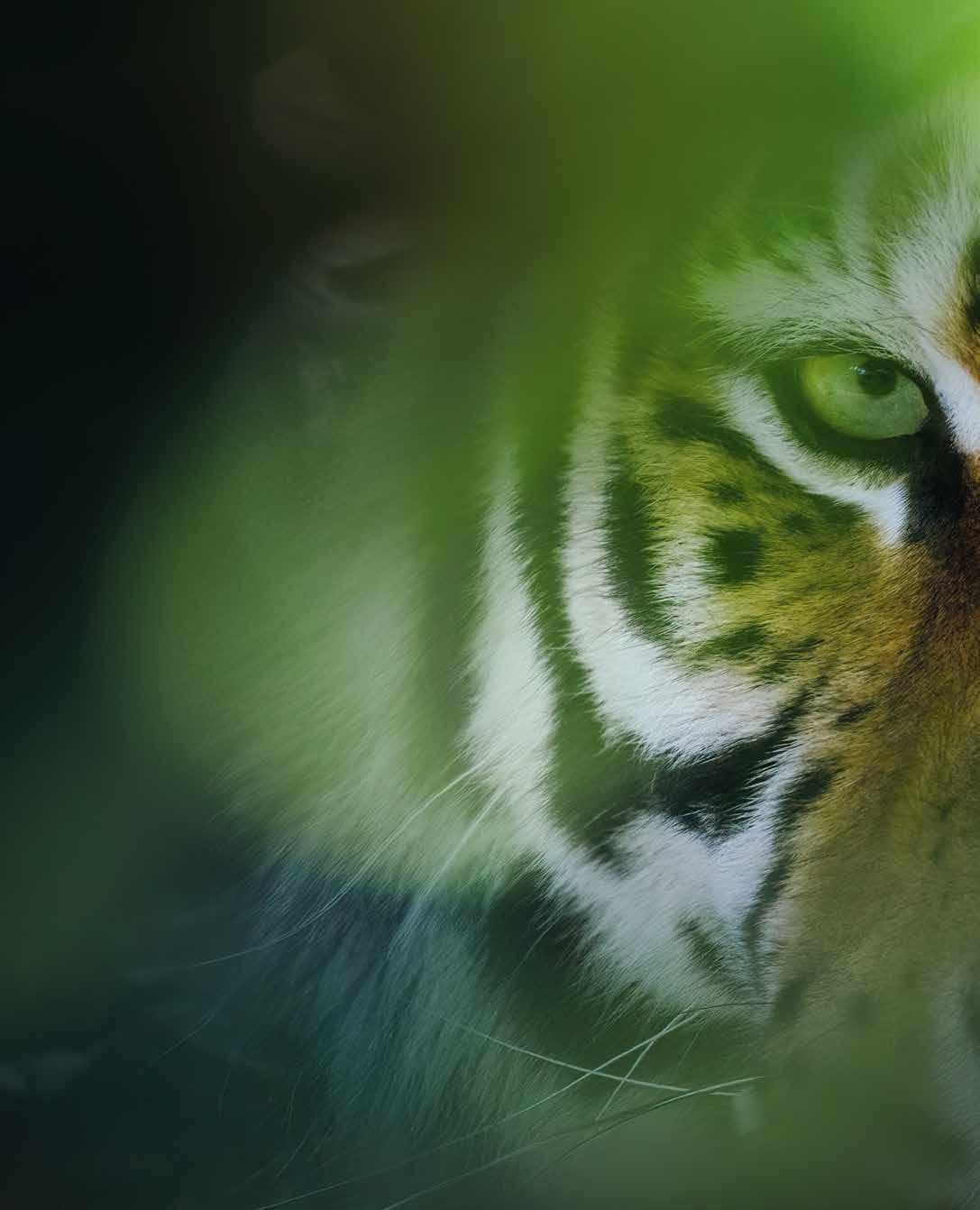

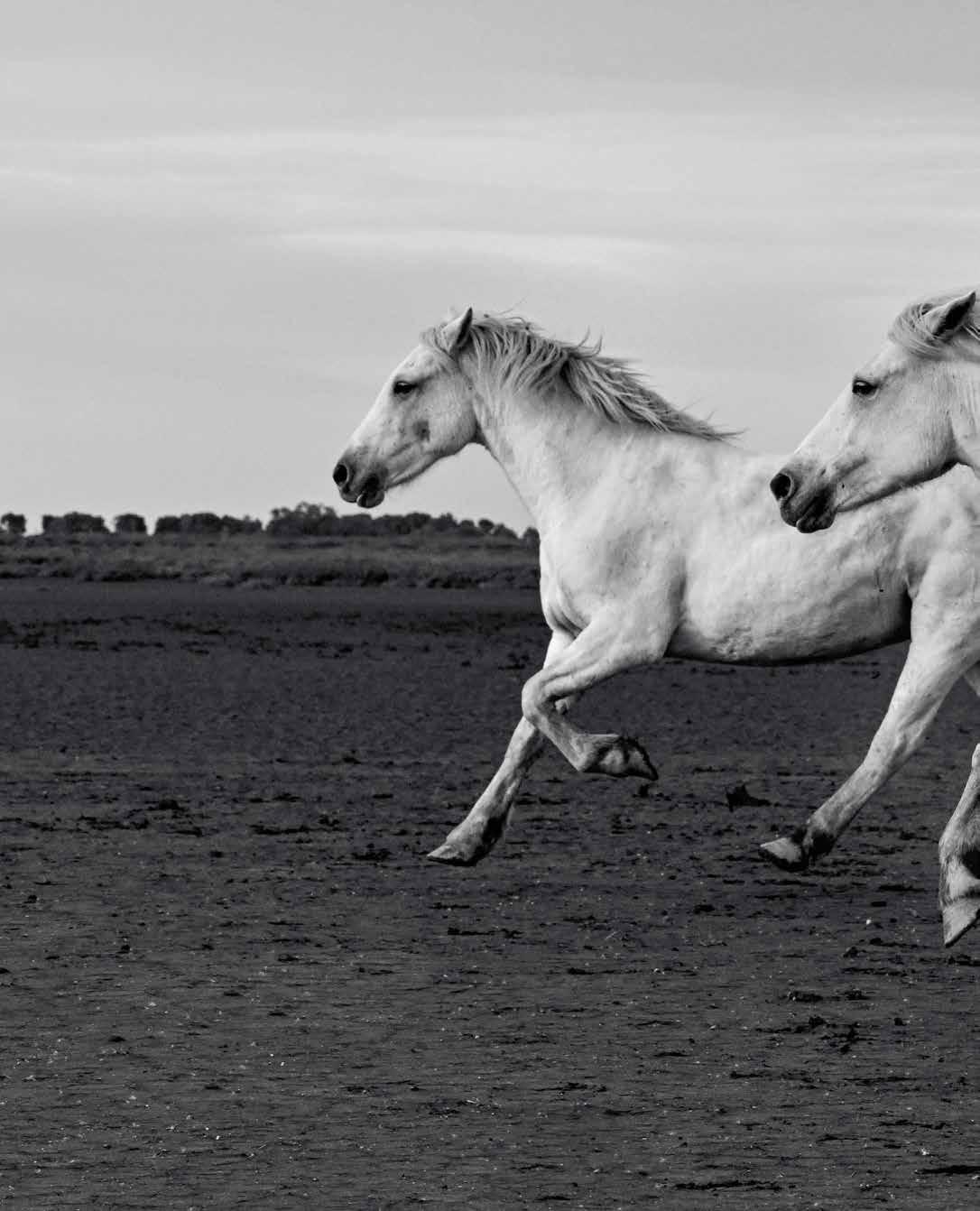

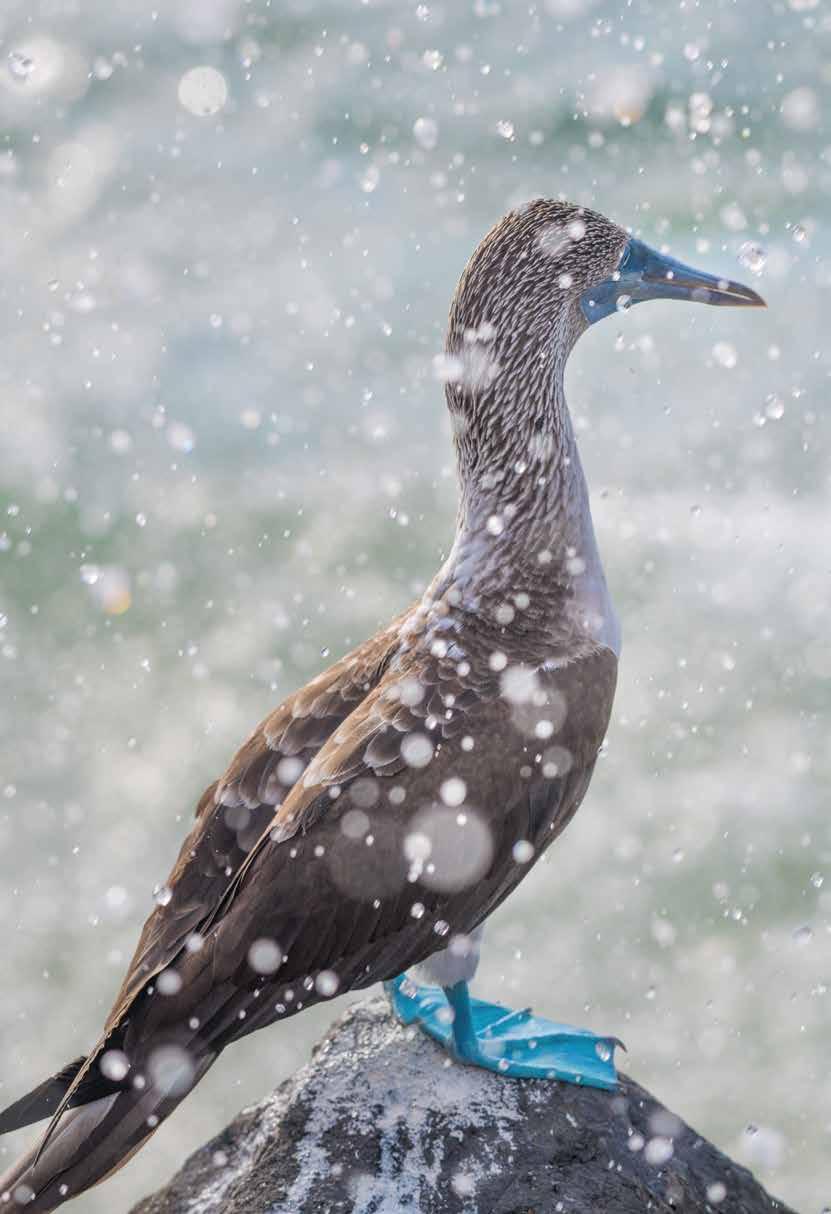
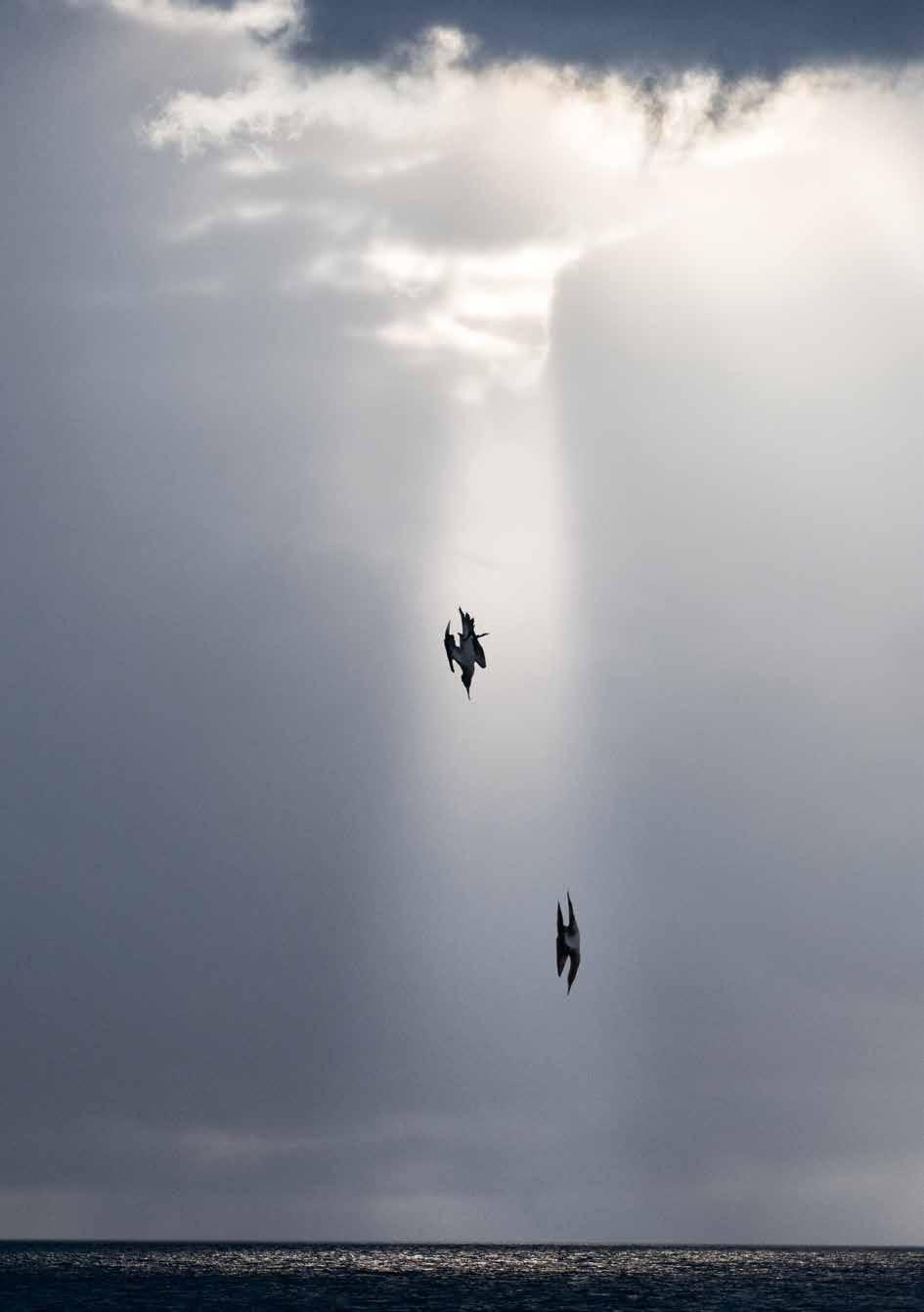

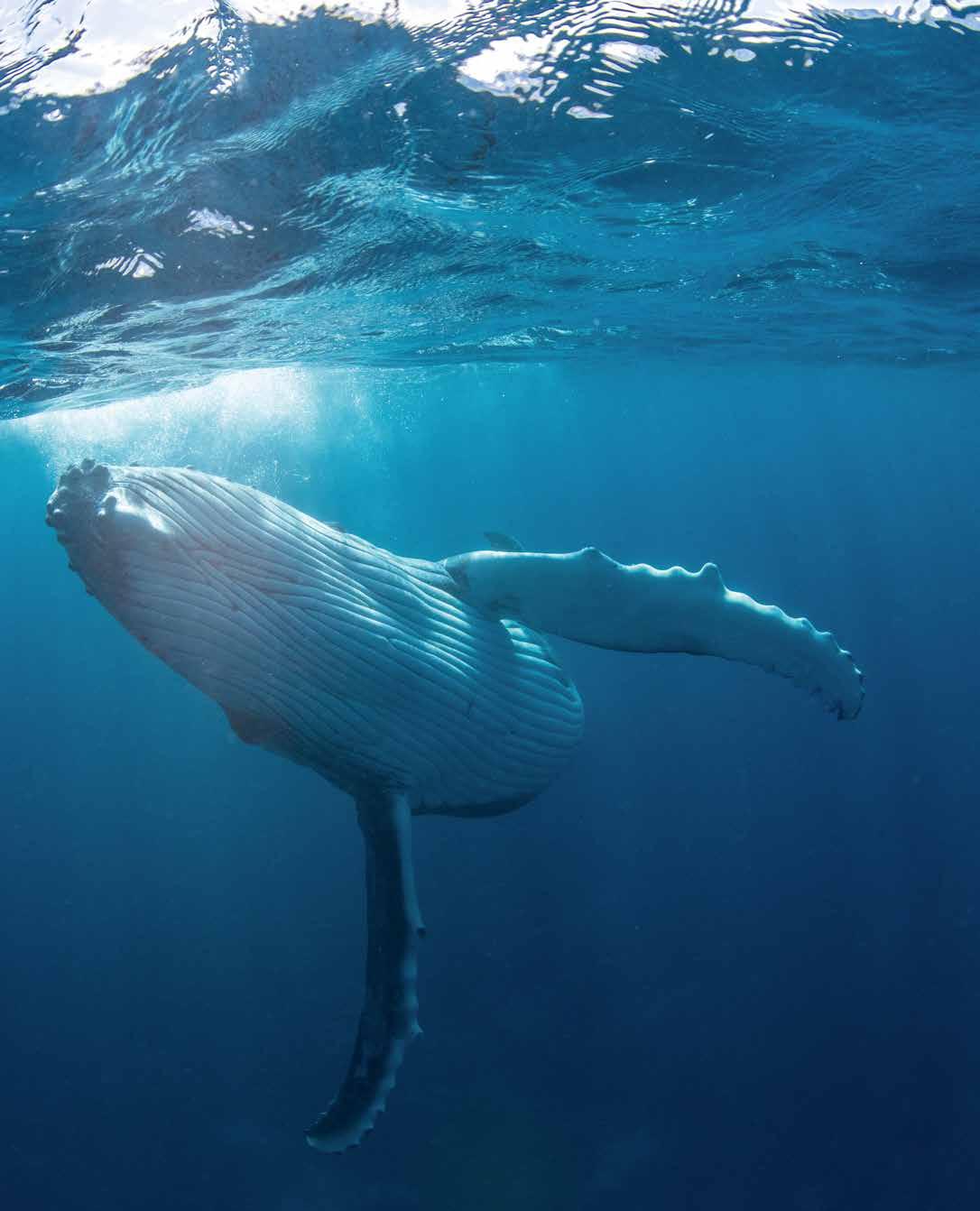

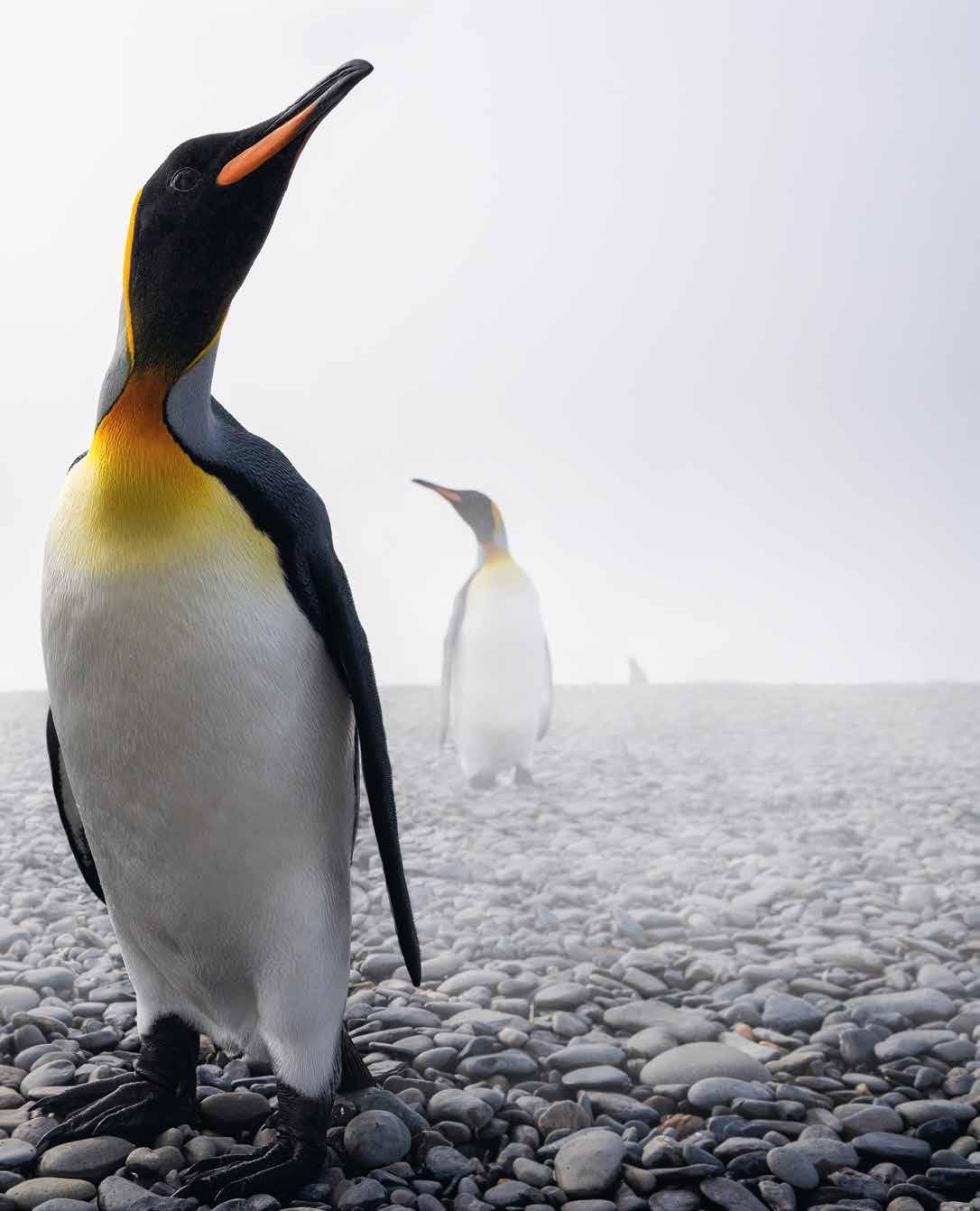
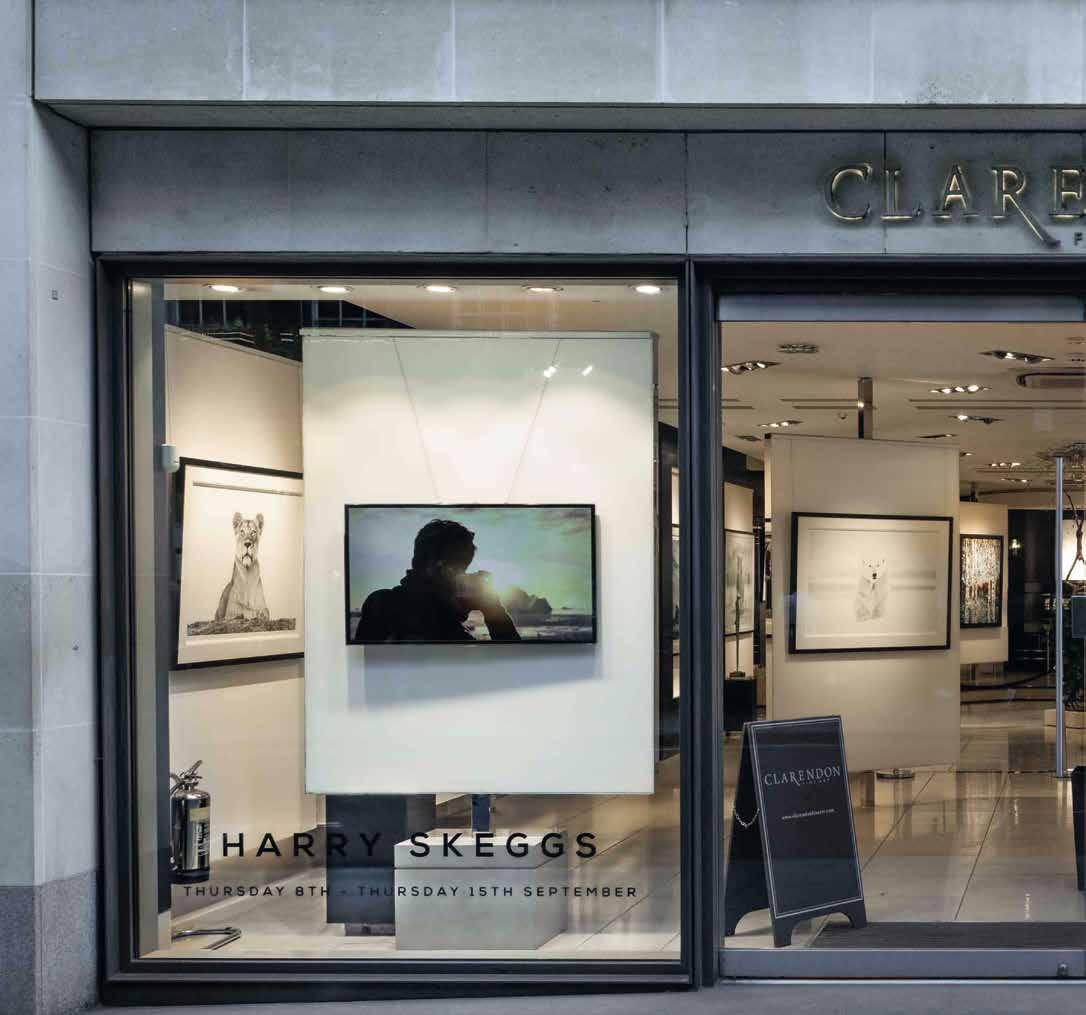
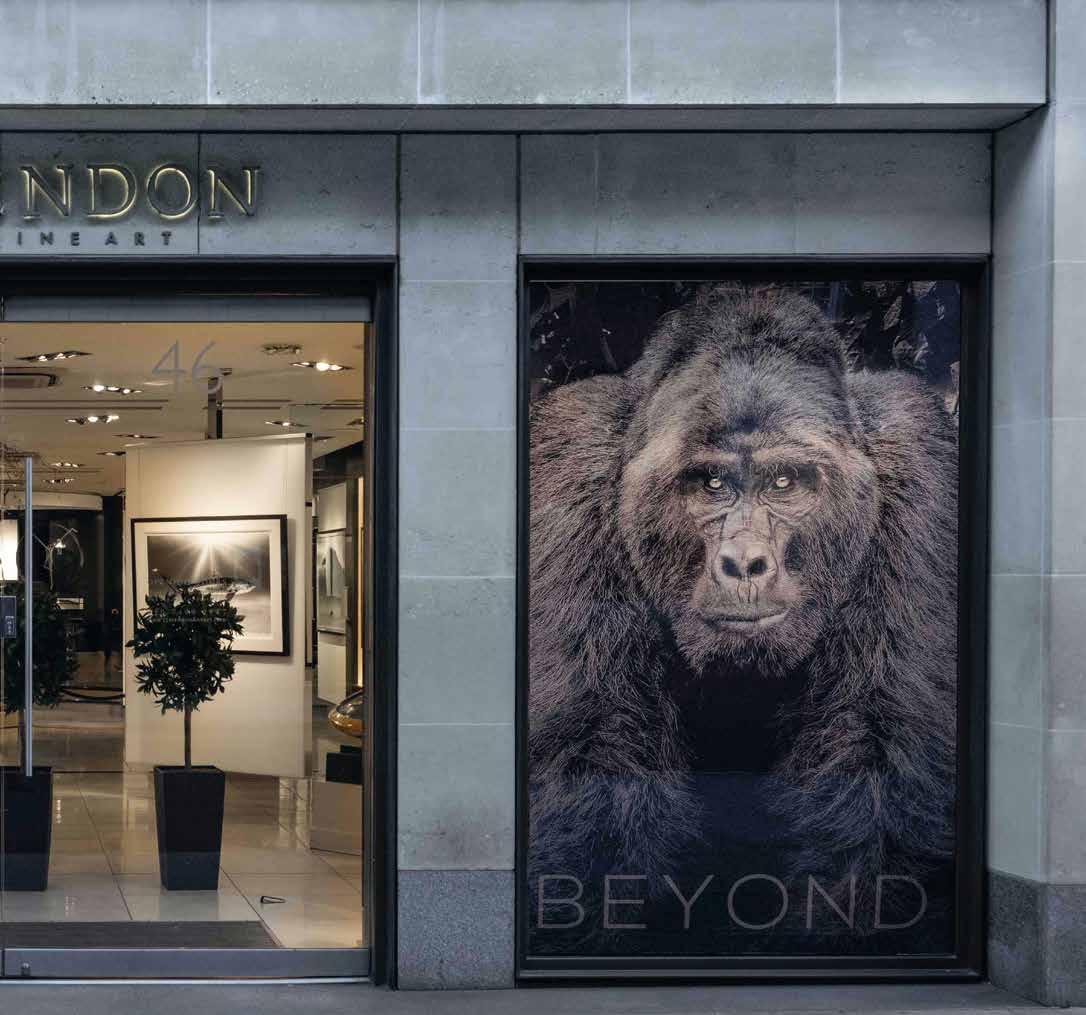

‘Creation’ is emotional, provocative and magnificent – not merely another book of beautiful photographs, but a piece of art that cannot help but inspire a newfound respect for wildlife and for the craft of photography.
LEVISON WOOD